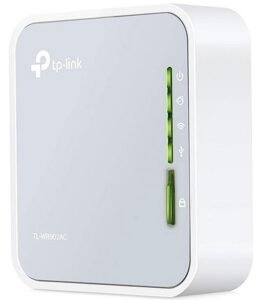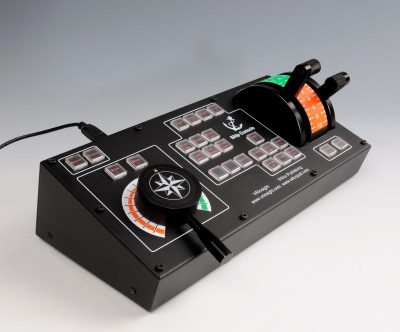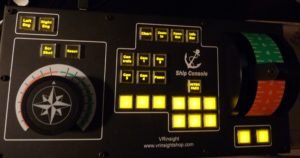MuVIT Hardware
To set up MuVIT hardware, you will require a computer. The initial MuVIT version was developed using an HP 4540S laptop equipped with an i5 processor and 8GB of RAM, which is a fairly basic configuration, indeed the computer was new in 2012 but continues to function quite well for this purpose in 2024. Your mileage may vary, but the point is that you do not need a gaming-quality PC for MuVIT to operate successfully. You can usually use the same machine for your classes and launch the simulator when needed. The software is not resource-intensive and can easily run alongside PowerPoint presentations. We do it routinely.
A little housekeeping item – Where we recommend or suggest a product, we have no interest nor do we get any kind of financial reward. We just suggest what we have found works, you can find equivalent items without too much trouble and we would recommend you do your own research if you are so inclined.
The minimum MuVIT hardware requirements for Virtual Sailor are:
CPU: Intel Core I5
RAM: 8GB
Video Card: NVIDIA GeForce 6500 GTX – You would be hard-pressed to find a laptop that can’t meet or exceed this.
VRAM: 1024MB of Graphics Memory
Sound Card: DirectX 9.0c Compatible
OS: Microsoft Windows 10/11
DirectX: DX9.0c – Read this blog post. Virtual Sailor does not install the DX9 runtimes by default but this will explain how to easily fix that.
We’ve been building the systems on this laptop an HP 17-inch Laptop, 11th Generation Intel Core i5-1135G7, Iris Xe Graphics, 8 GB RAM, 256 GB SSD, Windows 11 Home (model # 17-cn0025nr). But truth be told, any i5 that meets the basic requirements will suffice. As stated above, we have it running on a 12-year-old laptop and it works fine.
One thing to consider for the computer is that you may want an SSD (Solid State Drive) which is both faster and more forgiving of bumps, etc. but that is pretty much table stakes these days when you buy a laptop. Upgrading an existing laptop to have an SSD is a pretty basic operation. You just need some cloning software and you can easily make the change. There is no shortage of cloning software available, here is an article about how to clone your disk for free.
You can test your system’s hardware by downloading a demo of the Virtual Sailor NG package and trying it out. If all works fine you can go to the Virtual Sailor website and buy the full program for ~ $30.
MuVIT Hardware Controls
The Wheel
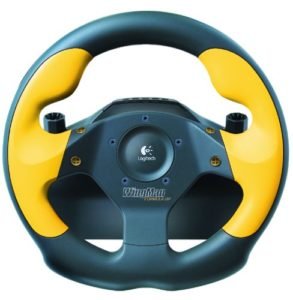
The Logitech Wingman Formula Force GP wheel is what we recommend for the simulator as the ship’s wheel. Unpowered, it operates more like the wheel of a vessel by not forcing the wheel back to center. These can be purchased in the $40-$50 range used. We generally get these off eBay and only had a problem once when they sent one with the wrong connector, but the eBay resolution system quickly corrected that issue. So make sure the one you ordered has a USB connector.
Also, an easy mistake to make is to order the Logitech Formula GP wheel. This wheel has bungee cords inside which will force the wheel back to the center, the Wingman Formula Force GP model does not do that if you don’t power it.
These can also be sourced from many other places. Based on what we’ve tested, almost any wheel should work, (Logitech G27, 29, 902) some need power, and some don’t. The powered ones often have the advantage of being self-calibrating. The buttons can be configured as the horn, binoculars, etc. as needed providing great flexibility in configuration. Some like to set the paddles behind the wheel to pan the view, which makes it easy to look around, again that’s whatever your preference is. We did a blog post about wheel compatibility that you might find helpful, be aware that the cost of new wheels can be formidable.
If you do buy a used wheel, they sometimes do not include the power supply cube. The Wingman Formula Force GP wheel doesn’t require one but it does make the wheel firmer, of course not many boat helms force themselves back to center so you decide. You may want a 24V adapter like this one from Amazon. Some wheels like the Logitech G27, 29, etc. won’t work without the power.
Console Tablet
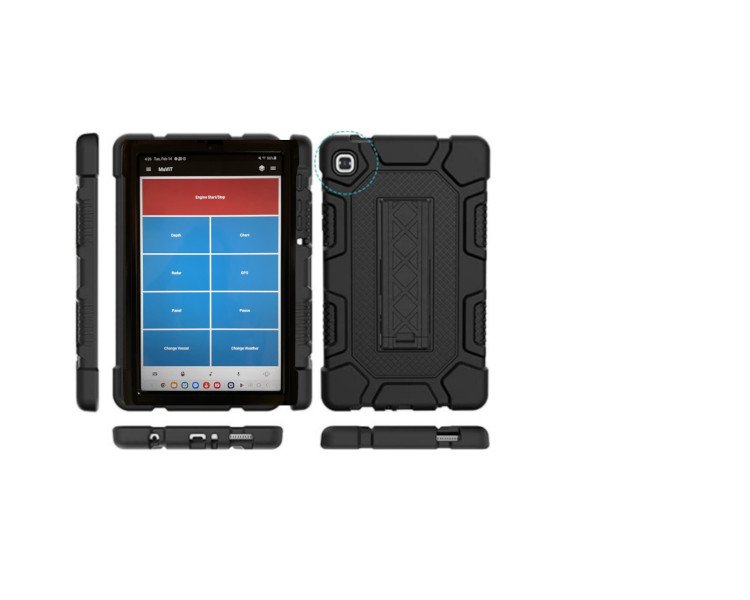
The console is based on an app called Unified Remote which runs on either an Android or iOS tablet or phone to serve as the control buttons, effectively creating a glass console. The buttons are labeled as to function making them easy to identify and use. Want the chart plotter, press chart, same for Radar, etc.
We have been building these on Samsung Galaxy A7 Lite Android tablets simply because the Apple tablets are so expensive. We also recommend a case for the tablet, the choice is yours. Or, take that old tablet or phone and give it a second life as a MuVIT hardware console. Recycled hardware is free hardware.
The tablet simplifies invoking features rather than hunting for the right key on the keyboard, and some selections require multiple keystrokes. the intent is to simplify that process. Unified Remote is an app you download from either the Android or Apple store as well as a server component you install on the computer running the simulator. The server side is free however the client side for the tablet costs around $5 for the full functionality.
Using UnifiedRemote scripting and a scripting language called Lua you define the buttons, locations, colors, etc. There is ample how-to documentation available on the web but it isn’t the most straightforward process.
Alternatively, you can purchase one of our ready-to-go scripts from our store and install it into your Unified Remote instance. One advantage of using our scripts is that we regularly update them and add new functionality to your MuVIT hardware.
Wireless Router
We recommend that you use a WiFi connection for the tablet connection as opposed to Bluetooth, simply because Bluetooth often has interference problems and a simple WiFi connection can avoid that issue which always seems to crop up at the worst possible time. While not a critical piece of MuVIT hardware it can avoid problems and add some capabilities such as an OpenCPN interface and the ability to join multiple simulators into a common interactive one.
You can use your standard WiFi home/office/whatever connection easily enough. For a standalone system, we recommend a basic WiFi router like the TP-Link AC750 Wireless Portable Nano Travel Router(TL-WR902AC) This one will operate right out of the box, has a lot of bandwidth, and is easily configured and inexpensive to allow you to build a private network for the simulator’s tablet and server to communicate.
Throttle(s)

One critical piece of MuVIT hardware is the throttle. You can buy throttle quadrants, they are readily available on Amazon, etc. but they are almost all geared to flight simulators and while they can work, they each come with their issues and often a hefty price tag since they are a specialty item. For this reason, we have developed our own throttle quadrants which we 3D print and source. Whether you use ours, the VRInsight, someone else’s, or roll your own, we recommend you read this blog post about how to configure the throttles. It is the point that causes the most heartburn but once you understand the process it is pretty simple.
Chill Pad
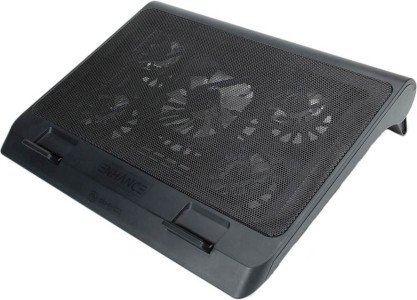
A powered chill pad for the laptop is highly recommended to help with cooling. Although the program is not computationally intense, the graphics can be quite intense at times and depending on your drivers and graphics subsystem can generate a fair amount of heat. While it generally won’t hurt the computer it can cause performance degradation if it gets too hot so for that reason, we recommend a good cooling system. We have found this one works well.
Which one to get is a function of your laptop, its size, and the layout of the cooling vents. Depending on how many USB ports your laptop has you may be able to power it directly or you may require an external USB power source such as a small cellphone charger type adapter. Amazon and other vendors have an ample supply at decent prices.
One quick recommendation, do not add birds to the simulation (yes, you can do that) They will rapidly eat away at your processing resources and raise the heat generated greatly.
Alternate VRInsight Console
This console is often the most expensive component other than the laptop one at approx. ~$450. It has built-in throttles which will support single or dual-engine arrangements based on the software configuration. It also has 26 buttons* that can be used to turn on or off functions and options within the simulator. It seems that not all buttons (4 or 5) are recognized by Virtual Sailor but most are. We have moved away from this console for a couple of reasons; First is the cost, at $450 it isn’t meeting our requirement for a low-cost solution. Also, it is becoming increasingly difficult to source. Currently, the only source seems to be the manufacturer VRInsight.
More information on the console and configuration can be found on our VRInsight tutorial page where we explain how to use this console if you already have one. We try not to obsolesce anyone where we can avoid it. It will still work with Virtual Sailor NG, but we can no longer recommend it to our members based on the cost and single source, especially given the other options above.


